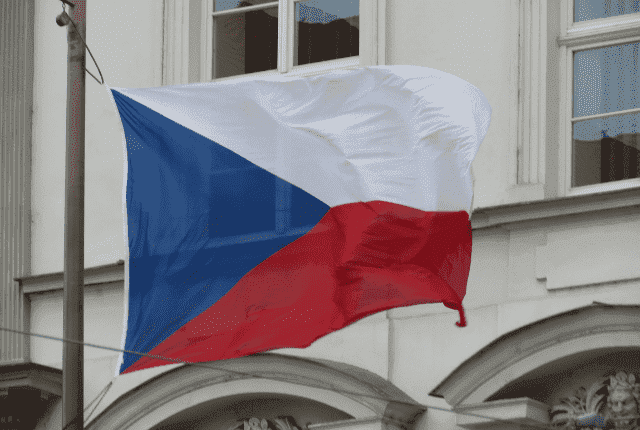Table of contents Show
The Czech National Anthem, “Kde domov můj” (which translates to “Where is My Home” in English), was composed by František Škroup and penned by Josef Kajetán Tyl. Kde domov můj is a historically significant piece of music that has defined the Czech identity for generations. This article will look at the history and significance of this beloved anthem.
The Czech National Anthem was first featured in the opera “Fidlovačka” in 1834. Initially intended for the stage, the Czech hymn struck a chord with the locals during the Czech National Rebirth, an effort to preserve the Czech language and culture under Austrian authority.
The lyrics of the Czech National Anthem exalt the country’s beauty and inspire a deep feeling of national pride. “Kde domov můj” was used as the Czech Republic’s national anthem in 1918 and became the only anthem for the Czech Republic following its 1993 split from Slovakia. It continues to represent the Czech people’s oneness, pride, and devotion to their motherland even today.
Introduction to the Czech National Anthem
Today, “Kde domov můj” remains a beloved symbol of Czech national identity. Its calming melody and simple words elicit feelings of pride and nostalgia for their motherland, making it an essential part of national and international events.
The anthem’s significance stems not only from its status as a national emblem but also from its portrayal of the Czech people’s enduring connection to their homeland, culture, and history. The Czech Republic’s national song “Kde domov můj” plays several vital functions, including:
A symbol of National Identity
The song emphasizes the Czech people’s connection to their homeland and cultural history, fostering national pride.
Historical significance
Written during the Czech National Revival in 1834, it helped to preserve the Czech language and culture during Austrian control, signifying resistance and solidarity.
Representation of nature
Its lyrics stress the beauty of the Czech terrain, reflecting the country’s appreciation for nature.
Cultural legacy
It was first included in the Czech Republic’s anthem in 1918 and remained the country’s song following its peaceful independence from Slovakia in 1993.
Patriotic roles in National events
The anthem is played at official events, sporting tournaments, and diplomatic gatherings to develop a sense of solidarity and patriotism.
Emblem representing peace and stability
Its tranquil and introspective tone sets it apart from more militant anthems, representing the Czech Republic’s preference for peace and cultural pride above aggressiveness.
History of the Czech Republic National Anthem
“Kde domov můj” (“Where is My Home”) originates from the Czech play “Fidlovačka,” written by Josef Kajetán Tyl and composed by František Škroup. The song was incorporated into the musical score for the play, which was performed on December 21, 1848.
In “Fidlovačka,” a young Czech woman performs a song about sadness and longing for her motherland. Its moving words and music encapsulated the spirit of Czech nationalism and resounded with audiences. Although “Fidlovačka” was not a tremendous theatrical hit, the song “Kde domov můj” gained fame and became a beloved emblem of Czech national identity.
The song grew in popularity and symbolized Czech identity and pride. In 1920, Czechoslovakia formally adopted “Kde domov můj” as its national song. The vivid and patriotic content of the song remained synonymous with Czech national sentiments after Czechoslovakia had been split into the Czech Republic and Slovakia in 1993. It continues to be a fundamental emblem of Czech national pride and identity.
Lyrics and Meaning of “Kde domov můj”
Famous Czech poet Josef Kajetán Tyl wrote the words that symbolize the Czech people’s hopes, struggles, and love for their country.
The words of Kde domov můj reflect a longing for a motherland and an emotional connection to it. The primary question, “Where is my home?” expresses a human desire for belonging and comfort. The song’s representation of the Czech land, including fields, mountains, and rivers, highlights the country’s natural beauty and picturesque scenery.
The Czech national anthem lyrics also vividly depict the Czech natural environment, emphasizing its physical appeal as well as its emotional and cultural value.
Additionally, the song’s emphasis on the homeland as a source of calm and beauty encourages feelings of national pride and unity. “Kde domov můj” is a cultural symbol of Czech heritage that emphasizes the role of land in establishing cultural and personal identity.
The Czech National Anthem in Modern Times
The Czech National Anthem is an important part of national celebrations, acting as a strong representation of Czech identity and unity. During key events like Independence Day, Republic Day, and various other national holidays, the national anthem instils pride and patriotism in the Czech population. It acts as a unifying factor, bringing together people from all origins and ideas around a common national identity.
The elaborate rituals and public gatherings where the Czech anthem is sung demonstrate its importance in national celebrations. Whether sung by a choir, performed by a symphony orchestra, or simply broadcast over loudspeakers, the national anthem is a powerful reminder of the country’s past, challenges, and successes. It is a moment that unites the entire country, allowing Czechs to reflect on their common values and goals.
Therefore, the anthem of the Czech Republic is extremely important in national festivals, serving as a unifying force and instilling a sense of communal pride among its people.
- Symbol of Czech nationality and unity.
- Invokes pride and patriotism.
- Unifies people from various backgrounds.
- Reminds you of history, difficulties, and successes.
- Reflects common values and ambitions.





